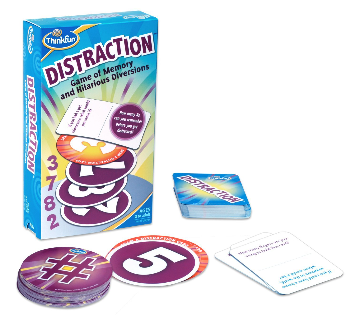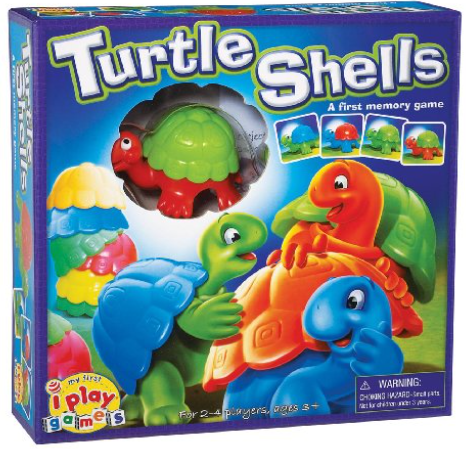 |
| Monkey Dunk - My favorite flipping game. |
The pond is set up in the bottom of the box. There are two blue plastic forms that sit side by side in the box and form the four deep cups that you can shoot the monkeys into. The cardboard background provides a backstop for long shots and is especially helpful for those who cannot grade the pressure (less running to retrieve monkeys who have flown over the game).
Push down on the hard plastic elephant, place it in one of the empty sections, and it will pop up randomly in an effort to block one of your monkeys from making it into a space. I used it once and have not used it since.
Object:
Be the first player to collect five bananas.
Set up:
Set up the box as noted above. Give each player one set of four monkeys (all the same color).
Play:
Everyone plays at the same time to see who can shoot all their monkeys into the pond first. The cardboard bananas are for keeping score. Play a set amount of games, let's say five. At the end of each round, give a banana to the winner. First person to collect 5 bananas is the grand winner.
Try this:
- Take the background down once the person is better able to grade the pressure and is able to get them into the cups without too many long shots flying over the box.
- Aim for 1 out of the 4 sections and see how many the player can get in.
- Use one section for each of the 4 colors. See if you can get all of the red in one section, all of the blue in another, etc.
- Work hand-over-hand if the individual has trouble pressing and releasing or grading pressure.
- Call a cup each time before the player shoots, such as right back, or left front, to tell him which cup to aim for. Or let him call the cup.
- Push the box back further or pull it forward to adjust to the person and/or make the game easier or more difficult.
- Time the player and see how long it takes to get all the monkeys into the cups, re-shooting ones that don't go in. Then play again and try to beat that time.
- Work
on visual discrimination, spatial relations, eye-hand coordination,
grading pressure, manual dexterity, finger isolation, socialization
skills, executive functioning skills, process skills, play and leisure
exploration and participation
In the box: 20 flippin' monkeys, 16 bananas, a target box with four sections, a stand-up background, a pop-up elephant











